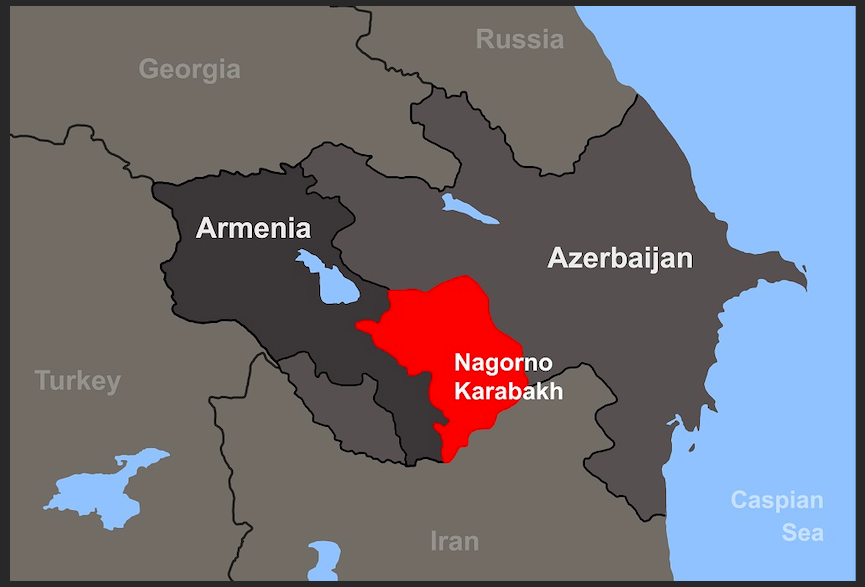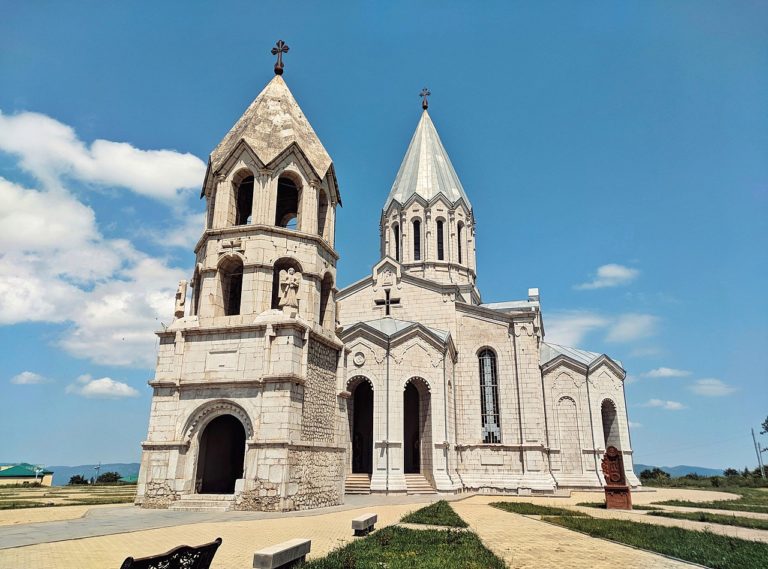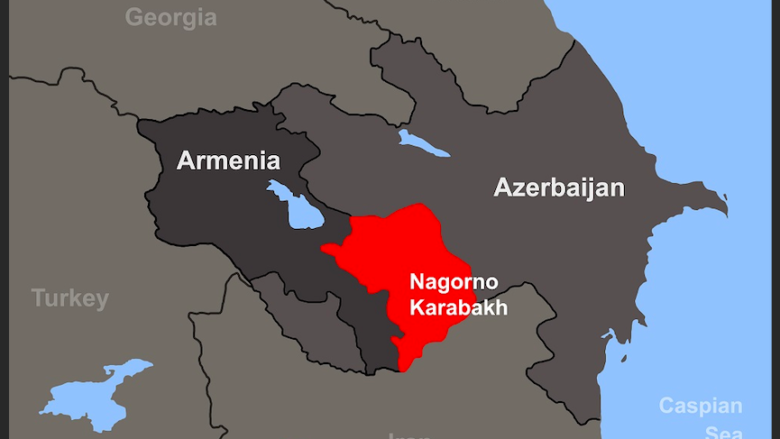
My life has been deeply influenced by the ever-present threat of war. Today, I share my perspective as someone who’s grown up in this environment of constant tension, where the danger of violence is always present. My sincere wish is for this article to shine a light on the ongoing crisis in Artsakh (see picture 1) and to call for the application of the United Nations’ Responsibility to Protect (R2P) principles. I hope this helps not just those already touched by the occupation of Armenia, but also those who’ve yet to understand its significance.
Artsakh, officially recognized as the Republic of Artsakh or the Republic of Nagorno-Karabakh, was a breakaway state in the South Caucasus whose territory was internationally recognized as part of Azerbaijan. However, the population in Artsakh consists of 96% ethnic Armenians. There is also a rich Christian heritage that survives to this day, including over 350 churches and the very first Armenian school Amaras, which was itself a church, dating back to the 5th century.
Since it was a frozen conflict, clashes often took place on the border, but the status of Nagorno Karabakh has remained unclear and diplomatic solutions have yielded nothing. In the 44-day war of 2020, Armenia lost over 4,000 soldiers, most of them 18-20 years old. The aftermath of the 2020 war revealed the desecration of churches, cathedrals, and monasteries, such as the Holy Savior Ghazanchetsots Cathedral (see picture 2). The destruction of the cathedral was another attempt to erase the Armenian cultural imprint from the area. These senseless attacks had no military purpose and resulted in injuries and loss of civilian lives, including women and children who were caught in the crossfire. Nagorno Karabakh was left with 30% of its territory and was only connected with Armenia through a narrow corridor called Lachin.
Starting from December 2022, Azerbaijan trapped 120,000 residents of Nagorno Karabakh in a blockade for nine long months, depriving them of access to essential resources including food and medicine. This created unlivable conditions for the people of Nagorno-Karabakh and, with further attacks, eventually made them flee their homes and enter Armenia less than a week ago. This has caused an ongoing crisis as those people entered Armenia as refugees.
This is not a remote issue for me; it’s a part of my everyday life. I’ve felt the tension, seen the fears, and experienced the uncertainties of living on the edge of conflict.
It is imperative that we recognize the gravity of such situations. Ethnic cleansing and genocide are crimes against humanity, and it is our collective responsibility to keep an eye on such atrocities and to limit dictators like Azerbaijan’s Ilham Aliyev.
I share this story as an Armenian from Chambarak, and as someone who hopes that shedding light on this tragedy can make a difference. Awareness is the first step toward finding a solution. We must recognize the struggles of the people of Artsakh and those who have fled. Countless lives have been impacted and will continue to be impacted even far beyond this small corner of the world. Let us strive for peace and understanding in a region that has known too much conflict.



